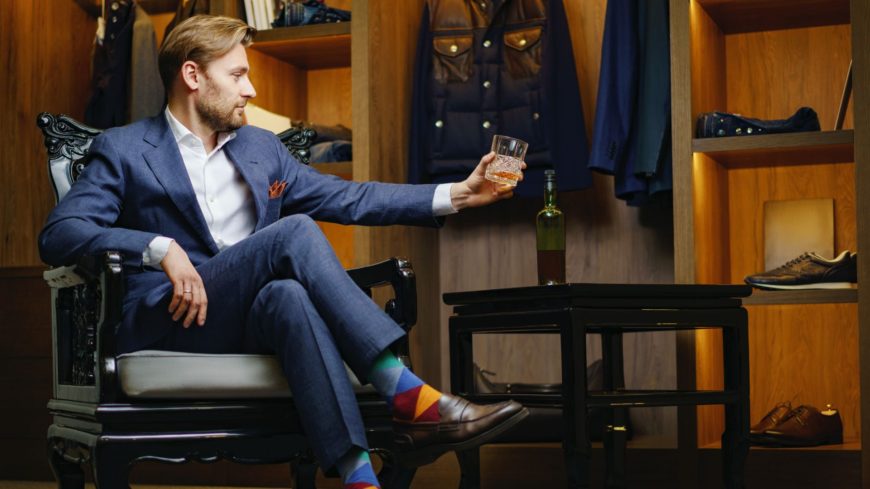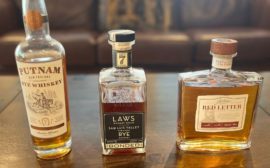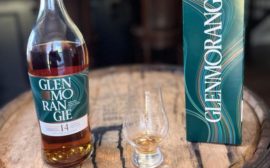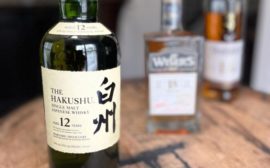Hidden Gems vs. Overrated Whiskeys
The whiskey industry is full of hidden gems with intrinsic quality based on excellent grain selection, a highly controlled fermentation process, a good cask selection, no chill filtration, etc. These whiskeys sometimes fly under the radar when the distillery puts money into the product and not in excessive advertisement.
Unfortunately, there is also the other side of the coin. These are overpriced or overrated whiskeys with plenty of marketing and words and phrases such as “exclusive”, “unparalleled commitment to quality” or “from our finest stocks” that target an audience that pays more attention to the shape and look of the bottle than researching the types of casks used for maturation.
The purpose of this article is not to degrade these expressions but to provide better options for those who want to get the most value when making a purchase. Readers who own one of these expressions from the list are entitled to their preferences but know that there are better options in the market for the same price or less.
My Top 5 Overrated Whiskeys
Hibiki Harmony from Suntory
As you may know, the Suntory brand carries a high prestige due to multiple factors, including winning a series of international whisky competitions against Scotch, American, and Irish brands. The brand has become such a powerhouse that uneducated consumers buy it regardless of the price.
In all fairness, the Japanese blend has a delicate texture that is easy to drink, achieving a good balance between floral and fruit flavors. Those who had the fortune to enjoy Hibiki 12 in 2016 for $80 know that Hibiki Harmony is nowhere near the quality of Hibiki 12 Year Old.
The problem with the Hibiki Harmony blend is that it had a good value proposition at the $70 mark when it launched in the US and even when I reviewed it in 2021, but that went away when the price rose to more than 60% in the last few years, so as much as I love the Suntory brand, the $120-$150 for a NAS (Non-age-statement) blend does not make sense.
Click here for more information: https://thejapanesebar.com/spirits-whisky-shochu/whisky/whisky-distillery/hibiki-harmony/attachment/hibiki-japanese-harmony-price-history-2-1-web1000/
It is not easy to match the exact flavor profile of Hibiki Harmony. However, other expressions in the market will give you more value for your money. Here are a few: Teeling Pot Still Irish Whiskey, J.J. Corry “The Gael” Irish Whiskey, Hibiki Master’s Select, and even the non-Japanese Nikka from the Barrel.
The Macallan 12 Year Old Double Cask
To say that The Macallan is overhyped is an understatement. Luxury is the main value proposition here, and questionable expressions are easy to spot with some practice. That said, I do not hate the brand and try to review each whisky based on its merits.
This malt ages in American oak seasoned with Oloroso sherry for an unspecified period and spends 12 years aging in European oak. 43% ABV is the bottling strength, and the profile is sweet with hints of raisins, caramel, and wood spices. However, the malt feels intense. There is a noticeable burn and a bold sherry flavor that does not justify the $90 price.
Other expressions that deliver a much better experience at 12 years of age are: Glengoyne 12 Year Old, Glenfarclas 12 Year Old, and Mortlach 12 Year Old.
Johnnie Walker Blue Label
This overpriced Scotch Blend is about $250 in retail today. On the label, the blend says: “Made up of the finest old-aged malt and grain whiskies”. The global reach and prestige of the brand allow the Blue Label version to be a NAS and bottled at a minimum of 40% ABV, which at that price range is an insult to the I.Q. of the customer.
The flavor profile has hints of honey, tobacco, light smoke, and sandalwood. However, the texture is thin, and the finish is short for a super premium Blended Scotch Whisky (A blend of grain and malt whiskies).
Some customers may like the blend for its flavor profile, but others buy it to impress. Those who take the time to research and compare to other blends or malts quickly realize they are overpaying for the brand and the status.
For those who like to stay in the Johnnie Walker range, the Johnnie Walker 15 Year Old version is a much better option due to its value = complexity/price. This comparison might not make sense to some of you, given that the Blue Label version is a blend while the Green Label version, priced at $60, is a blended malt. However, from a marketing positioning and price perspective, the Blue label is at the top of the range, not the other way around, so it makes sense to compare them.
Jack Daniel’s Old No 7
The American Whiskey is an example of a producer (Brown-Forman) who uses the story about Jasper Newton Daniels and Uncle Nearest to create a compelling marketing campaign. Brown-Forman also uses the Lincoln County process (filtering the spirit through sugar maple charcoal) to differentiate its product.
Stastita.com confirmed what we already knew.
“The company’s advertising expenditure has fluctuated slightly over the last several years but has stayed more or less stable at around 400 million per year. Jack Daniel’s, being the most popular brand, that Brown-Forman owns, receives the most advertising funding, at around 28 million dollars, followed by Gentleman Jack, Herradura, and Woodford Reserve.”
I take the stories told by Kentucky and Tennessee distillers with a grain of salt because I know that corporations are behind these stories for profit purposes. Also, people love romantic whiskey stories like the one about the origin of bourbon when Baptist Minister Elijah Craig created the first bourbon by accident when barrels in his barn caught fire, and to keep things low cost, he used the burned barrels for aging. OMG! What a discovery! 🙂
Is the Tennessee Whiskey that good to make it the best-selling American Whiskey? The answer is NO. JD7 is not a terrible whiskey but pales in comparison to other expressions. The fact that consumers in the U.S. mix it with Coca-Cola should tell you something.
As I mentioned above, the main argument against Jack Daniels Old No. 7 is not price but an overhyped whiskey brand that does not hold its own in a blind tasting. There are countless better options in the market, so I will leave it up to you to decide which ones are better.
The Pappy Van Winkle Range and Allocated Bourbons
The list will not be complete without mentioning The Pappy Van Winkle range of allocated bourbons. These include:
- 10 Year Old Rip Van Winkle (The most affordable. $500 in the secondary market)
- 12 Year Old “Lot B” Family Reserve
- 15 Year Old Family Reserve
- 20 Year Old Family Reserve and
- 23 Year Old Family Reserve.
The pedigree of Buffalo Trace extends to several generations of master distillers and owners. The brand’s history goes back to the late 19th century, when Julian P. “Pappy” Van Winkle, owner of Stitzel Weller Distillery, purchased W.L. Weller & Sons to form Stitzel-Weller Distillery.
Fast forward several decades, Julian Van Winkle, III (grandson of Julian V.) decided to bottle old stock from Stitzel-Weller, placed them under the Pappy Van Winkle brand, and sold them at unheard ages (15, 20, etc.) in the 1990s. It did not take long for the brand to gain a cult-like status that remains to this day. To meet demand, the grandson partnered with Buffalo Trace Distillery.
Currently, Van Winkle only sells a few thousand cases a year to meet the demand of an entire legion of bourbon drinkers. As you might expect, prices of some of these bourbons typically can exceed a few thousand in the secondary market.
The root of the problem is not only a limited supply but also the limited allocation of bottles that liquor distributors get assigned to each state under the “great” three-tier liquor system (distillery-distributor-retailer) in the United States, allowing some states to get more bottles than others creating price differences and black market opportunities.
Click here for a price reference of the Van Winkle core range: https://allocatedoutlet.com/products/pappy-van-winkle-10-year-12-year-15-year-20-year-23-year-bundle?currency=USD&variant=44492737577246&utm_medium=cpc&utm_source=google&utm_campaign=Google%20Shopping&gclid=CjwKCAjw6eWnBhAKEiwADpnw9vcLGmoMTJHF282pMuD4TpF9Ab7BNStv2X3vuW05dkiFz-OKmACyWxoCsAEQAvD_BwE
Pappy Van Winkle whiskies are good but not worth those prices. The hype is so crazy in the Southeast that customers make long lines outside liquor stores to get a lottery ticket to purchase some of these expressions. Other overrated allocated expressions are George T. Stagg Jr., Old Fitzgerald, and E.H. Taylor.
Here are some more modestly priced options that might not taste like Pappy Van Winkle but are good enough to make you happy. These are Weller Special Reserve, Heaven Hill 7-Year-Old Bottled in Bond.
I would like to hear your opinions about this list. I hope you enjoyed this post. Have a great weekend. Cheers!





